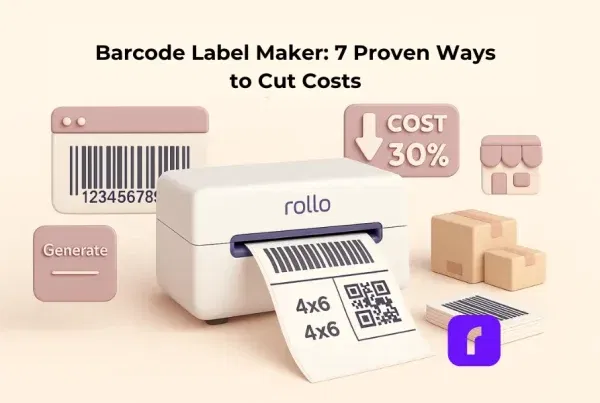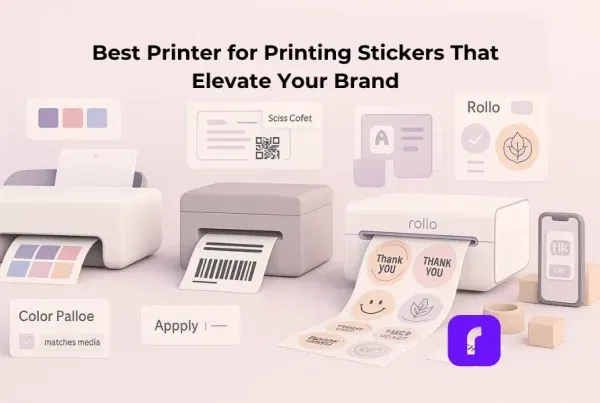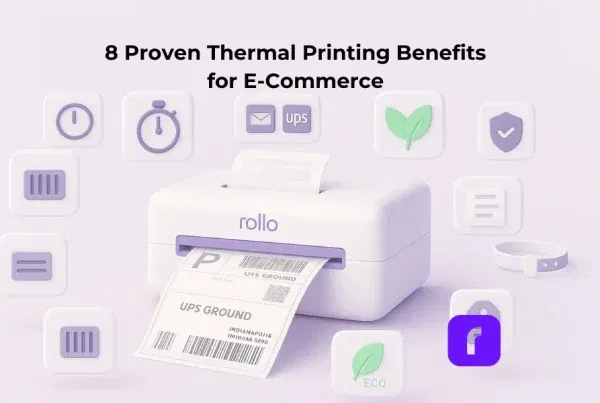“Wait—sustainable practices save money?” “Yep. In fact, they might be the smartest financial move you make all year.”
For many small business owners, the term green business still feels like a luxury—something reserved for large corporations with endless budgets and PR teams. But in 2025, that mindset is costing entrepreneurs more than they realize. Today’s eco-friendly business models aren’t just about helping the planet, they create big savings and less landfill waste. They’re built to streamline operations, reduce waste, and improve your bottom line in ways that traditional practices simply can’t compete with.
Think fewer packaging errors. Lower material costs. Shipping systems that don’t guzzle ink or time. And yes—loyal customers who actually care that you’re doing business the right way.
In this guide, we’ll break down what a green business really looks like, how it pays off financially, and where to start—especially if you’re running an online store or scaling a growing brand. You’ll also discover practical tools (like Rollo’s ink-free printing solutions) that make going green easier, faster, and more affordable than ever.
Let’s flip the script: sustainability isn’t an expense. It’s an upgrade.
The Journey Ahead
What Is a Green Business? (And Why It Matters for SMBs)
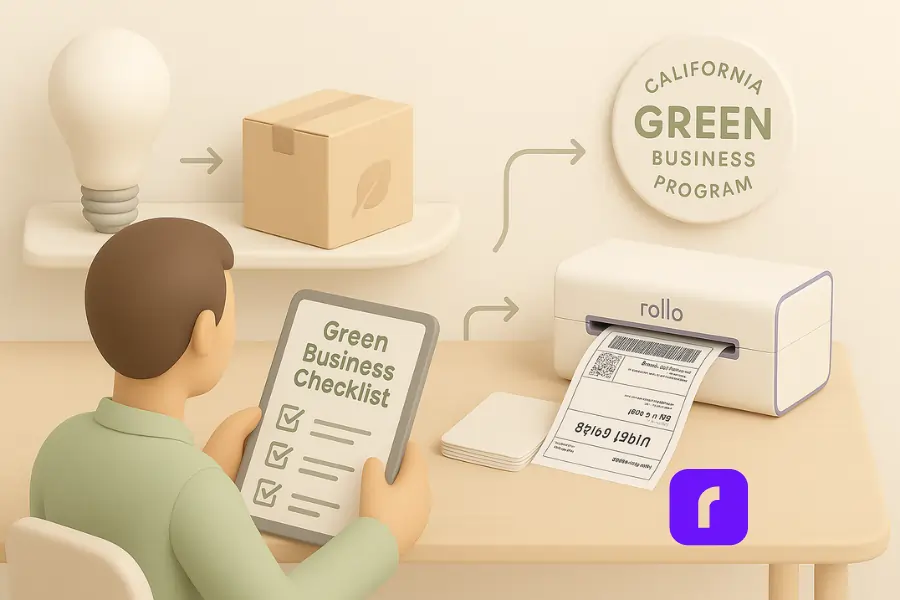
A green business is any company that purposely lowers its environmental impact while staying profitable. It focuses on using fewer resources, creating less waste, and following clear environmental standards like those set by the California Green Business Network. This isn’t just a feel‑good badge. Customers, investors, and even shipping carriers now track how responsibly a business operates.
For online sellers and medium sized businesses, that often starts with simple changes—choosing right‑size boxes, switching to LED lights, or printing labels with an ink‑free thermal printer. Each small move chips away at overhead and boosts your reputation.
Adding a stand‑alone H2 right after “What Is a Green Business?” is the cleanest choice:
- It follows the “definition → real‑world example → broader benefits” flow.
- It lets you work both required phrases—california green business network and green business program—into an H‑tag without crowding other sections.
- Readers who operate in other states can still use the takeaways, because the Network’s checklist and incentives mirror programs nationwide.
Below is the exact section you can drop into the draft. It clocks in at ~140 words, so it won’t throw off your target length.
California Green Business Network: A Proven Program for SMBs
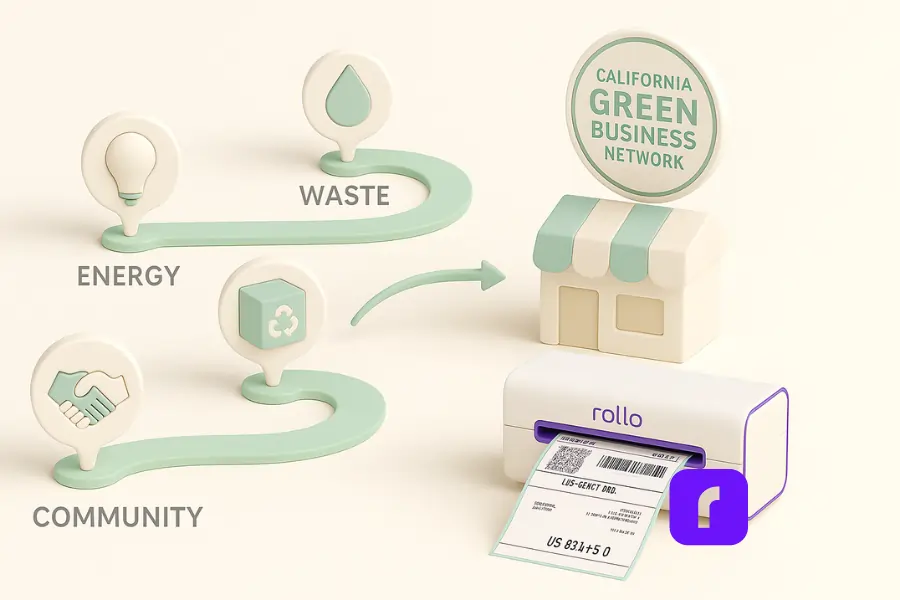
The California Green Business Network is the largest statewide green business program in the U.S. It guides companies through a step‑by‑step checklist that covers energy, water, waste, and community outreach. After a free baseline assessment, advisors suggest low‑cost fixes—like switching to LED lights or right‑sizing shipping boxes—that often pay for themselves in months. Advisors lend their expertise to help you meet each checklist goal. Finish the checklist, and you earn a certification badge many shoppers already recognize.
Even if you’re outside California, downloading the Network’s public toolkit can kick‑start your own plan. Think of it as a ready‑made roadmap: follow the actions, cut costs, and prove your environmental impact with paperwork customers and partners trust.
Why Green Living Pays Off Today

Customers Expect Proof, Not Promises
Shoppers scroll past endless product listings, so trust is everything. A recent survey showed more than 60 percent of consumers interested in eco‑friendly brands will pay extra for products that arrive in recycled or certified packaging. When your store highlights lower carbon footprints and plastic‑free shipping, you turn a tough crowd into repeat buyers.
Regulations and Rewards Are Growing
Cities from San Francisco to Miami now offer tax rebates for energy‑efficient equipment and fine companies for excessive trash. Jumping on the trend early keeps you ahead of rules tied to climate change while unlocking grants or low‑interest loans meant for sustainable upgrades.
Efficiency Equals Savings
Energy‑smart lighting can cut power bills by a third. Right‑sizing boxes trims dimensional‑weight fees. And thermal printing—like the system offered by Rollo’s wireless label printer—eliminates costly ink cartridges for good. Each switch lowers costs month after month.
Everyday Green Practices That Cut Costs
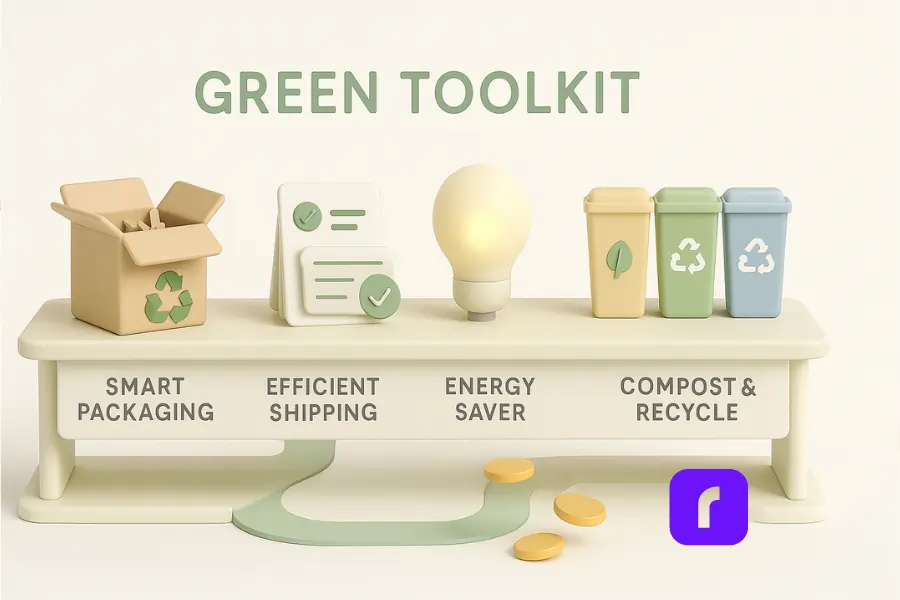
Rethink packaging. Swapping foam peanuts for shredded cardboard not only reduces waste but also protects items just as well. For a deeper look at eco-friendly eCommerce order fulfillment, check out this guide on sustainable packing strategies. Choose suppliers with ethical sourcing policies and transparent audits to be sure every box and filler aligns with your sustainability promises. Lightweight, snug boxes lead to lower shipping charges and fewer damages.
Use smarter shipping methods. Group orders by zone to reduce fuel miles, and choose carriers with greener fleets whenever possible. Rollo Ship can compare USPS and UPS rates in seconds, so you pick the most efficient route every time.
Trim energy and water use. Simple steps—like installing motion sensor lights in the warehouse or fixing a leaking tap—pay back in weeks. These are low‑hanging fruit that drive up savings without hefty investments.
Compost and recycle. Set up bins for paper, plastic, and food waste in your break room. Over time, you’ll see garbage pickups drop while employees take pride in your shared mission.
Ready to make shipping leaner, greener, and far less stressful?
Rollo Ship lets you print ink‑free, FSC‑certified labels and handle every invoice, packing slip, and customs form in a few quick clicks. You’ll cut paper waste, dodge costly delays, and prove to customers that sustainability is baked into every order you send.
Save time, save money, and ship with confidence
A Five‑Step Plan to Start Your Green Journey
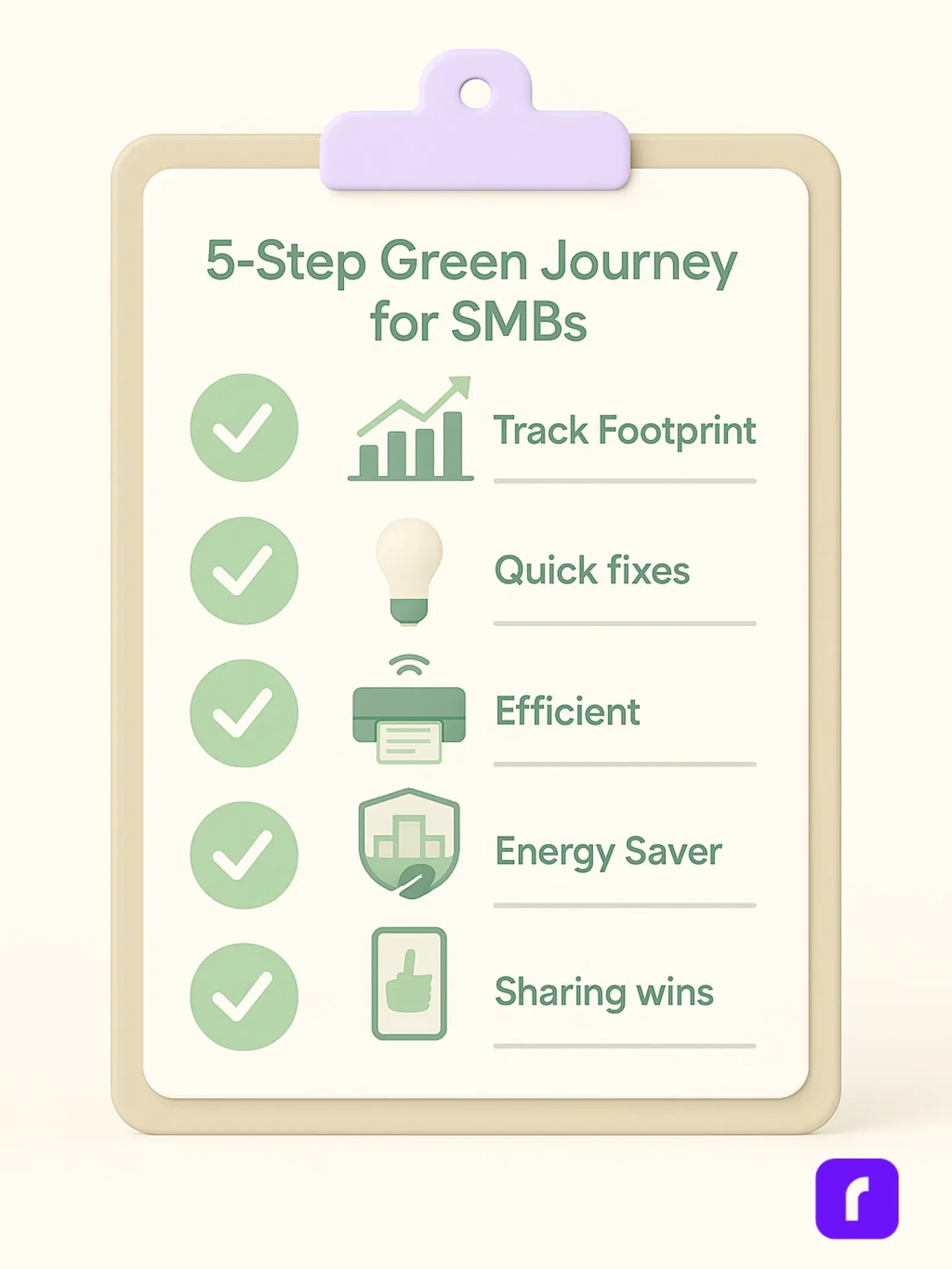
- Track your current footprint. Spend one week noting power usage, packaging sizes, and trash weight. Data shows where you bleed money.
- Fix the obvious leaks. Replace burned‑out bulbs with LEDs and resize your most‑used shipping boxes. Both changes are cheap and fast.
- Adopt low‑cost tech. An ink‑free thermal printer cuts label costs and cartridge waste from day one. Rollo’s model connects over Wi‑Fi, so setup is quick.
- Leverage local programs. County and city green business programs often give free audits or rebates. Check community boards for upcoming events and grants.
- Share your wins. Post before‑and‑after shots of your new packaging or energy bills on social media. Customers love watching your progress and will spread the word.
Each step builds momentum. Start small, celebrate savings, and reinvest the gains into bigger upgrades—like solar panels or electric delivery vans—when you’re ready.
Shipping Smarter with Rollo: Your Hidden Advantage
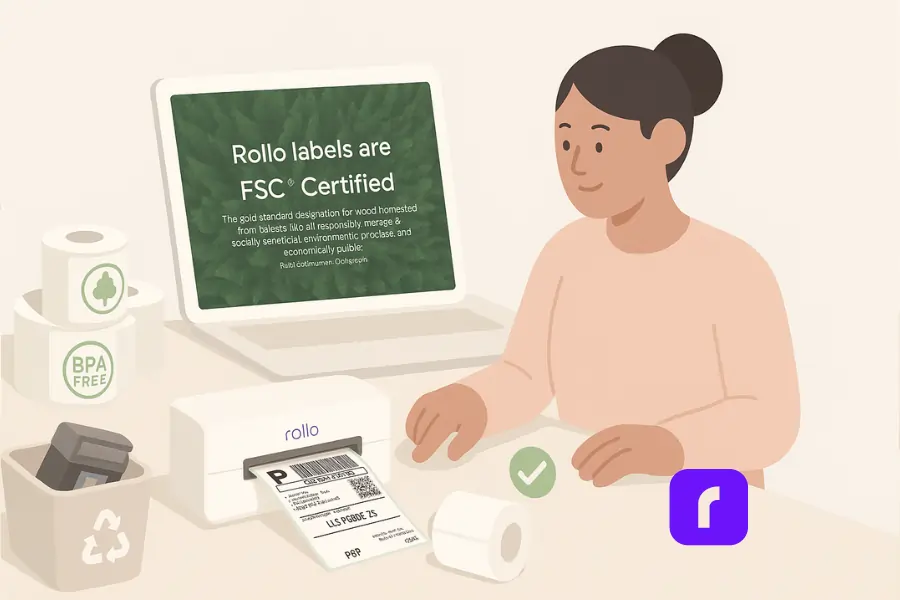
Shipping might be your single biggest expense and biggest pollution source, but it’s also the easiest place to flip from red to green.
Ink‑free thermal printing. Traditional inkjet labels fade, smudge, and require pricey cartridges. Rollo’s wireless thermal printer uses heat to print crisp labels—no ink, no mess, no landfill cartridges. Over a year, many sellers save hundreds of dollars and keep piles of plastic out of the trash.
FSC‑certified, BPA‑free labels. Rollo’s label stock comes from responsibly managed forests, meets strict health guidelines, and reassures eco‑conscious customers that you walk the talk.
Rollo Ship software. By integrating USPS and UPS accounts, you can compare rates, batch‑print labels, and schedule pickups—all in one dashboard. Fewer clicks mean less human error, fewer reprints, and lower costs tied to return shipping.
These changes aren’t radical. They’re practical tweaks that add up fast, helping you and the planet at the same time.
Want lightning‑fast labels without the waste (or the ink bill)?
Rollo’s Wireless Printer uses heat—not cartridges—to deliver crisp, smudge‑proof labels that meet every carrier’s specs. Pair it with our shipping scale and 4 × 6 FSC‑certified label stack to power a greener, smoother workflow from click to doorstep.
Explore Rollo’s Wireless Label Printer and print smarter today.
Roadblocks and Simple Fixes
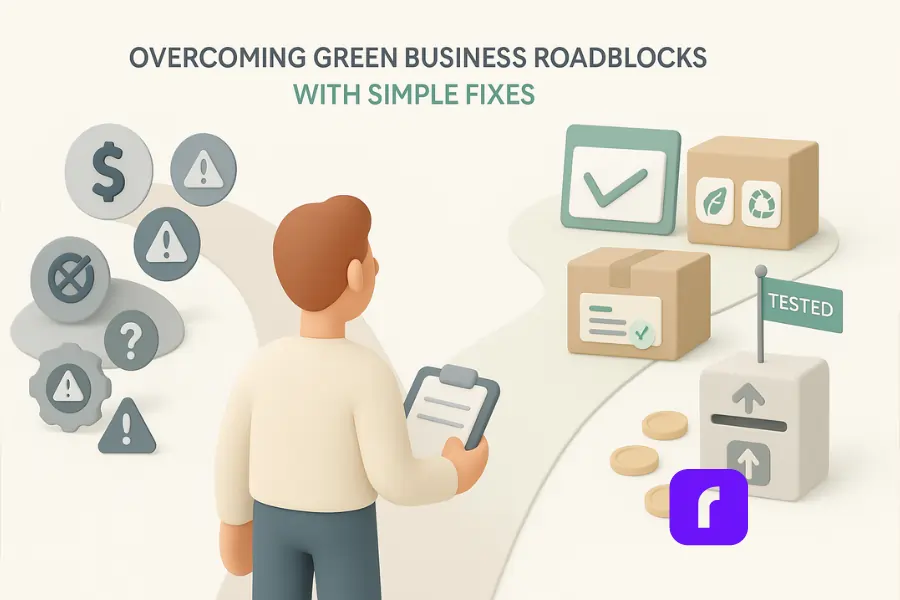
Up‑front costs scare me. Many utilities offer rebates that cover 20 to 50 percent of efficient equipment. Plus, lower power bills pay back the rest in less than a year.
My gear might not be compatible. Modern eco‑friendly boxes and labels run on standard packing lines. Test a small batch before converting everything.
Scaling feels risky. Pilot one department—like returns processing—with greener supplies. Prove the savings, then scale across your operation.
Join the Green Business Community
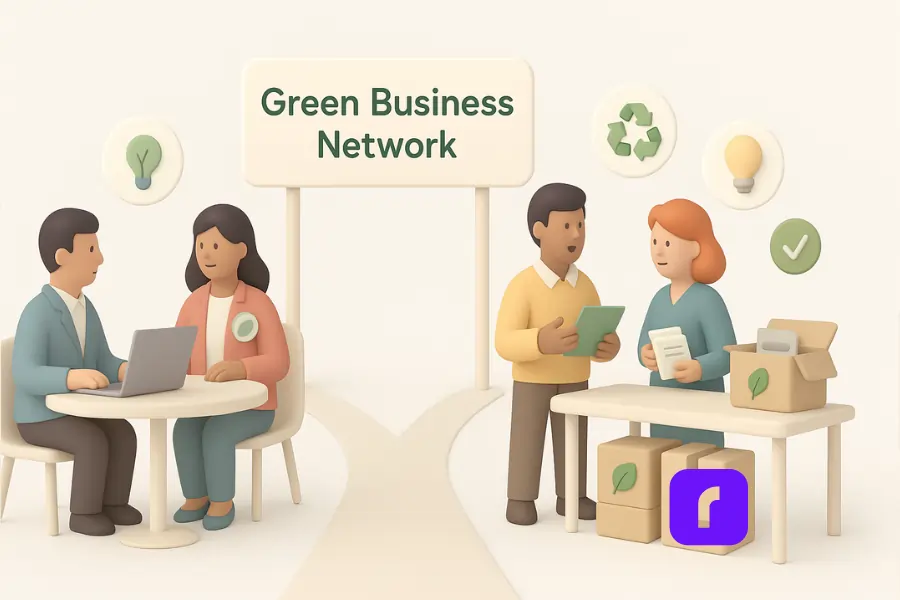
You’re not alone on this path. Networks such as the Green Business Network and local nonprofits host free webinars, peer groups, and case‑study libraries. Joining signals to stakeholders and investors that you value sustainability. Plus, certification logos on your site boost trust with new buyers.
If you’re seeking peer support or vendor referrals, local meet‑ups are a gold mine. Attending these events also introduces you to vendors who share your ethics—making it simpler to source recycled materials or low‑energy equipment.
Final Words
Switching to a green business model isn’t about perfection; it’s about progress that pays. By shrinking waste, trimming power use, and embracing tools like Rollo’s wireless thermal printer and Rollo Ship, you’ll watch expenses drop and loyalty climb. Every small change strengthens your brand, protects the environment, and pads your bottom line.
Ready to cut costs and ship smarter? Explore Rollo’s ink‑free printer and eco‑friendly labels today, and start building the green business your customers will love.
Follow Rollo on:
Frequently Asked Questions About Green Business
📌 Q: Isn’t a green business expensive to run?
💭 A: Not when you focus on efficiency. Low‑cost switches—like thermal printing or LED lights—deliver quick payback and long‑term profits.
📌 Q: What certifications matter most?
💭 A: Programs such as the California Green Business Network or your state’s equivalent verify that you meet rigorous environmental standards, giving customers confidence in your efforts.
📌 Q: How can I measure my carbon footprint?
💭 A: Begin with free calculators from the EPA or local utilities, then refine numbers using shipping data pulled directly from tools like Rollo Ship.
📌 Q: Do customers really care about eco‑friendly packaging?
💭 A: Yes. Multiple studies show consumers choose brands that align with their values, even at a slight price premium—especially when the packaging is recyclable and clearly labeled.
📌 Q: Where can I find resources to get started?
💭 A: Check city or county sustainability offices, nonprofit guides from the Green Business Network, and Rollo’s blog for step‑by‑step tutorials on greener shipping and operations.
